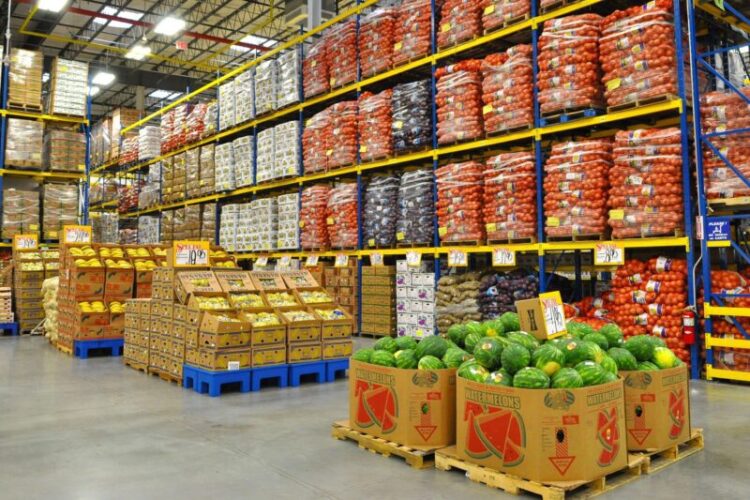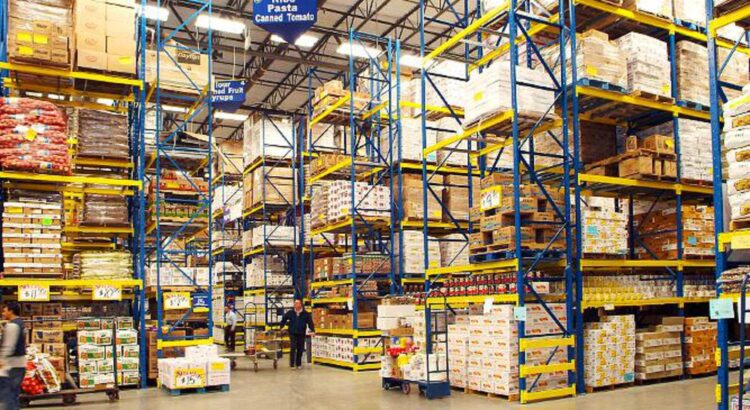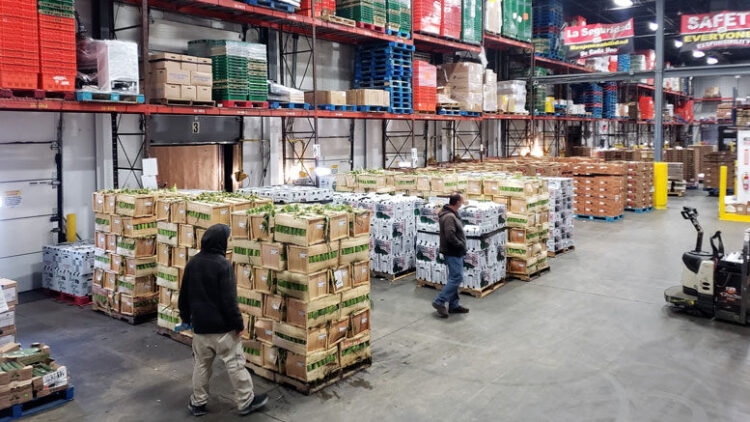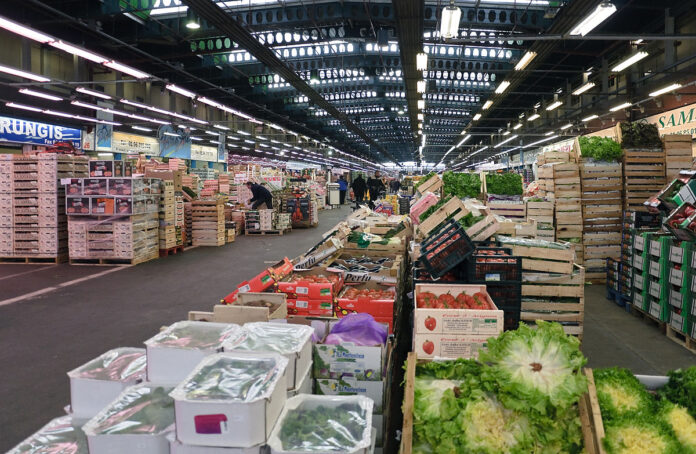The wholesale food distribution industry is undergoing a profound transformation driven by advancements in technology and software solutions. From farm to fork, the entire food supply chain benefits from innovative software applications that streamline processes, enhance efficiency, reduce waste, and ultimately deliver fresher and safer food to consumers.
This blog post will explore how wholesale food distribution software is revolutionizing food distribution and how these advancements reshape an industry critical to global food security.
The Traditional Wholesale Food Distribution Model

Before delving into the impact of software on the wholesale food distribution sector, it is essential to understand the traditional model. Historically, this industry operated on manual processes, often plagued by inefficiencies and lack of transparency. Here are some of the key challenges that the sector faced:
- Inventory Management: Managing inventory in large warehouses and distribution centers was complex and error-prone. Expiry dates were often overlooked, leading to significant food wastage.
- Order Processing: Orders were typically processed through phone calls, faxes, or emails, resulting in delays and errors in order fulfillment.
- Tracking and Traceability: Tracing the source of food products and identifying their journey through the supply chain was labor-intensive, making it difficult to respond to recalls or quality issues swiftly.
- Demand Forecasting: Predicting demand accurately was challenging, often leading to overstocking or stockouts.
- Communication and Collaboration: Collaboration between suppliers, distributors, and retailers needs to be improved, hindering effective coordination.
The Digital Transformation

The digital transformation of wholesale food distribution is marked by the adoption of cutting-edge software solutions that address these long-standing challenges. Let’s explore how software is revolutionizing various aspects of the industry:
1. Inventory Management
Software systems now offer real-time inventory tracking and management. IoT (Internet of Things) sensors are deployed in warehouses to monitor temperature and humidity, ensuring the preservation of perishable goods. Predictive analytics and machine learning algorithms help optimize inventory levels, reduce waste, and improve stock rotation.
2. Order Processing
Digital order management systems allow for seamless and automated order processing. Customers can place orders through web-based platforms or mobile apps, reducing manual data entry errors. These systems also integrate with inventory data, ensuring accurate order fulfillment.
3. Tracking and Traceability
Blockchain technology is being utilized to enhance the traceability of food products. Every step in the supply chain, from the farm to the distribution center to the retailer, is recorded on an immutable blockchain ledger. This improves transparency and aids in rapid recalls when necessary, reducing the risk to consumer safety.
4. Demand Forecasting
Advanced analytics powered by big data enable more accurate demand forecasting. Weather patterns, historical sales data, and consumer trends are analyzed to predict demand fluctuations. This helps wholesalers plan their inventory and distribution more effectively, reducing excess inventory and preventing stockouts.
5. Communication and Collaboration
Cloud-based collaboration tools and B2B e-commerce platforms transform communication between suppliers, distributors, and retailers. These platforms enable real-time information sharing, such as product availability, pricing, and promotions. Geographical constraints no longer hinder collaboration, allowing for smoother and more efficient supply chain operations.
Benefits of Software Transformation

The impact of software in wholesale food distribution extends far beyond operational improvements. Here are some of the notable benefits:
1. Reduced Food Waste
Real-time monitoring and predictive analytics help minimize food waste by ensuring optimal inventory management and reducing the likelihood of products reaching their expiration dates.
2. Improved Food Safety
Enhanced traceability and recall capabilities ensure that contaminated or unsafe products can be swiftly removed from the market, protecting consumers and the brand reputation of wholesalers.
3. Cost Savings
Automation and optimization of processes reduce labor costs, lower energy consumption, and decrease transportation expenses through efficient routing and delivery schedules.
4. Enhanced Customer Experience
Digital platforms enable customers to easily access product information, place orders, and track deliveries. This improves customer satisfaction and loyalty.
5. Sustainability
The industry strives toward a more sustainable future with more efficient inventory management and reduced waste. Additionally, optimized transportation routes contribute to a reduction in carbon emissions.
Challenges and Considerations

While the software-driven transformation of wholesale food distribution is undeniably promising, it comes with a set of complex challenges and considerations that require careful navigation. In this extended discussion, we will delve deeper into these challenges to provide a comprehensive understanding of the landscape:
Cybersecurity Concerns
As the wholesale food distribution industry embraces digital technologies, it exposes itself to a heightened risk of cyberattacks and data breaches. The growing interconnectedness of systems and the vast amount of processed sensitive data require robust cybersecurity measures. The stakes are high, as a breach can compromise the integrity of the entire supply chain, potentially leading to contaminated or unsafe products reaching consumers.
Implementing and maintaining robust cybersecurity protocols is not just an option; it’s an imperative. Wholesalers and their partners must invest in cutting-edge cybersecurity solutions, continuously update them to counter emerging threats, and proactively monitor their systems for any signs of intrusion.
To ensure data protection and supply chain integrity, compliance with industry-specific cybersecurity standards and regulations, such as the Food Safety Modernization Act (FSMA).
Integration Challenges
Adopting software solutions in wholesale food distribution often necessitates integrating new technologies with legacy systems. While modern software can offer significant advantages, the integration process can be intricate, time-consuming, and costly.
Compatibility and interoperability between different software systems, both new and old, are paramount. Failure to achieve seamless integration can result in data silos, inefficiencies, and missed opportunities for process optimization. It is crucial for businesses to carefully plan and execute their integration strategies, potentially seeking the assistance of experienced IT professionals or consultants to ensure a smooth transition.
Workforce Training and Adoption

The successful implementation of new software systems depends not only on the technology itself but also on the readiness and competence of the workforce. Transitioning to a digital-centric model requires employees to acquire new skills and adapt to changing work processes.
Resistance to change can be a significant hurdle in this transformation. Employees may be accustomed to traditional manual processes and perceive new technology as threatening job security. To overcome this resistance, businesses must invest in comprehensive training programs that empower their workforce with the skills needed to operate and maximize the benefits of the software.
Effective change management strategies, including communication and incentives, can help foster a culture of adaptability and innovation.
Data Privacy Compliance
A data collection and management surge comes with the increasing digitization of wholesale food distribution. This includes not only operational data but also sensitive customer information. Strict adherence to data privacy regulations is paramount to protect individuals’ rights and maintain trust in the supply chain
Regulations such as the General Data Protection Regulation (GDPR) in Europe and the California Consumer Privacy Act (CCPA) in the United States impose stringent requirements on handling personal data. Businesses operating across multiple jurisdictions must navigate a complex regulatory landscape and ensure that their data practices comply with regional laws.
Compliance efforts should include comprehensive data protection policies, transparent data collection practices, and mechanisms for obtaining consent when necessary. Moreover, by legal requirements, businesses must be prepared to respond to data breaches promptly and effectively.
Conclusion
Wholesale food distribution software is amid a technological revolution powered by innovative software solutions. Software is reshaping how food moves through the supply chain, from inventory management to order processing, tracking, and demand forecasting. This transformation enhances efficiency, reduces waste, and improves food safety, customer satisfaction, and sustainability.
While challenges remain, the benefits of this digital transformation are clear, making the wholesale food distribution sector more agile and better equipped to meet future demands. As technology evolves, we can expect even more exciting developments in the coming years, further optimizing how we feed the world.







